About us > Conservation department
Information:
Main information:
Introducing the conservation department
Contact persons at the conservation department
The conservation department of the Bavarian Administration of Palaces, Gardens and Lakes was founded in the year 2000. Although it is a very new institution, it is based on a long tradition of preserving the cultural heritage, which dates back to the 17th century when various craftsmen were employed by the court administrators to maintain the palaces and their furnishings. Today the conservation department has a staff of about 47.
Among these experts are 26 restorers specializing in the areas of painting/ sculpture, furniture/ wooden objects, graphics/ archive material, textiles, wall paintings/ stone and craftwork, ceramics and treasure. 21 further employees are responsible for the craft traditions. The gilders, sculptors, ornamental metal-workers, saddlers, painters, bookbinders, carpenters and cabinet-makers acquired a large part of their specific competence during the reconstruction of the Munich Residence. The unusual grouping of these various occupations in the conservation department enables the Bavarian Palace Administration to fulfil the many requirements of preserving and looking after the art objects.
Today the conservation department is responsible for conservation and restoration in all the Bavarian Palace Administration's 46 palaces, castles and artist's houses. It looks after listed buildings with their unique interiors and garden sculptures as well as outstanding international collections of treasure, ceramics and miniatures. One of the main focuses of the department's work is the preservation of historic room ensembles which combine a great variety of materials and designs. The valuable interiors include wall paintings, stucco-work, gilding and wooden wall panelling, wallpaper of paper and leather, textile wall coverings and tapestries, furniture, chandeliers, paintings, sculptures, graphics and art objects of every kind. These are often presented in the context in which they have been assembled or as collections.
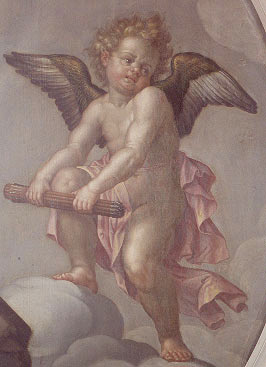
Detail from the ceiling painting
"Fortitudo" by Peter Candid from the
Antiquarium in
the Munich Residence:
an angel tries to
break a bundle of
arrows (a symbol of
strength)
Condition after restoration
Photo: Bayerische Schlösserverwaltung
The tasks of the conservation department also include replacing particularly vulnerable art objects with carefully researched reconstructions or copies. The original objects are restored and then displayed under museum conditions. The department's staff are also involved in the regulation of general conservation matters, the planning and establishment of depots and the design and implementation of exhibitions. Museum or preservation decisions are made together with the experts of the building, museum and garden departments.
A large part of our work involves restoration and maintenance in the palaces, residences and castles themselves. Many important and valuable art objects are conserved and restored in our workshops. Accurate restoration requires comprehensive examinations and analyses, as well as a study of the history and context of the objects concerned. Freelance restorers are responsible for part of the actual restoration work, under the supervision of conservation department employees. All the specialized knowledge acquired is documented, and a valuable body of experience has been accumulated which is accessible for research purposes.
Training the next generation of restorers is one of our main interests. For this reason our workshops are open to the students of various universities and to interns. Their project work, semester papers and diploma theses are supervised closely by restorers and craftsmen. In addition we endeavour to pass on our knowledge of working with art and the cultural heritage to the staff of the external administrative offices and to this end organize an regular castellan day in the administrative headquarters.
By publicizing selected projects we want to try and reach an even wider public and contribute to the discussion of current conservation and restoration problems.
Information about an internship in the conservation department

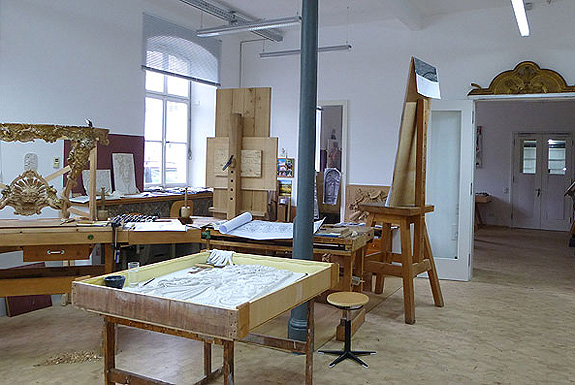
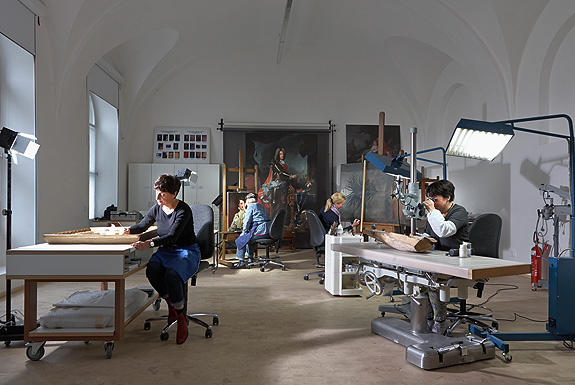
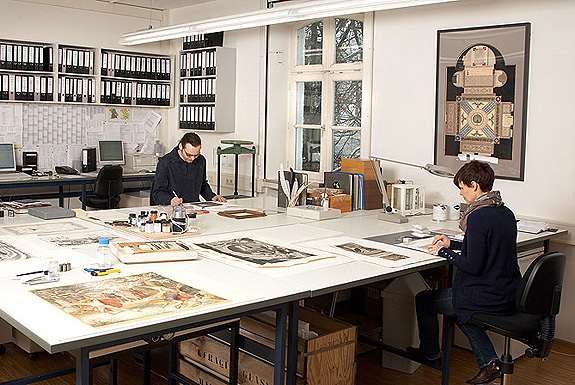
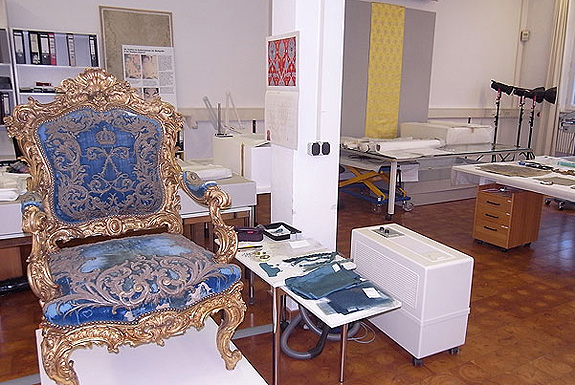
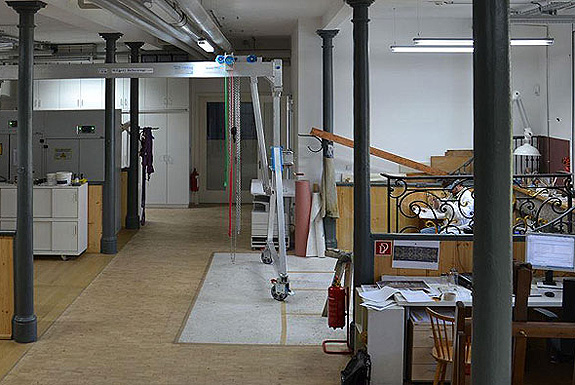
Facebook Instagram YouTube